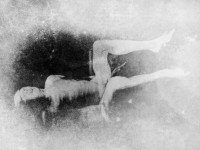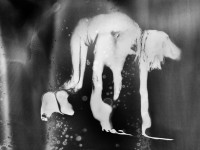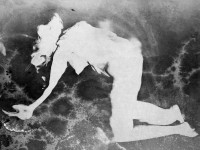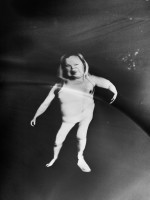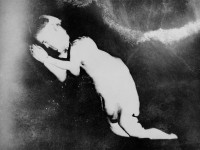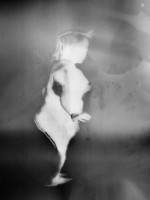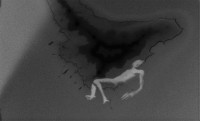Gravity-series
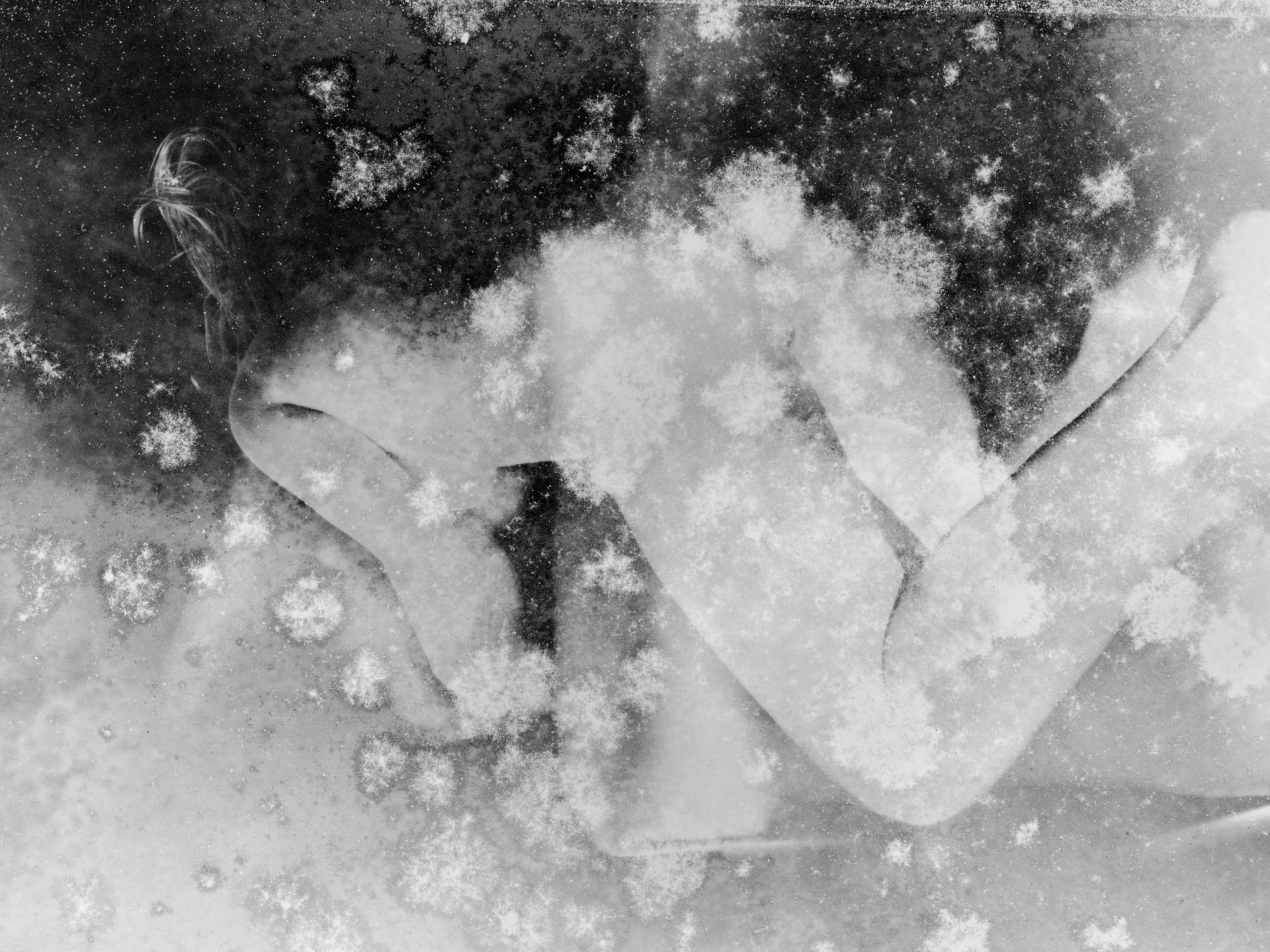 Figure # 22, 2022
Figure # 22, 2022pigment print
100 x 75 cm
edition 5 + 2AP
When [...] the world of clear and articulate objects is abolished, our perceptual being [...] evolves a spatiality without things. This is what happens in the night. Night is not an object before me; it enwraps me and infiltrates through all my senses [...]. Night has no outlines; [...] it is pure depth without foreground or background, without surfaces and without any distance separating it from me.
Maurice Merleau-Ponty: Phenomenology of Perception (translated by Colin Smith)
In his new austerely black and white work, Aapo Huhta fills his photographs with a darkness so impenetrable that it dissolves the horizon. This nocturnal void is inhabited by figures that seem to be shrouded in milky mist or to exist behind a veil of cosmic radiation.They are at once painfully corporeal and infinitely distant, as if visual echoes from another dimension. These bodies give us no information on the space they inhabit, because their existence does not adhere to familiar laws of physics.
Three-dimensionality
is in peril when Huhta dismantles the figurative tradition of the photograph. Through
the use of analog processes and methods, his works warp space and time in a way
that borders on the grotesque. The artist distorts the contours of the human
body with a great sense of urgency: these beings are above all to be described
as mortals.
The series Gravity sees Huhta progress along a path of existential discovery. His artistic work has always been concerned with humankind's relation to surrounding space, and has over the years moved away from its documentary origins to an increasing degree of abstraction. The human figure is a constant subject in Huhta's photography, however, even if in a highly anonymized form. When reduced to a mere shadowy silhouette, as was the case in the artist's previous series Omatandangole, the individual body becomes a symbol for humanity and can take on a multitude of meanings. In Gravity Huhta abruptly inverts his former colour scheme, turning away from the blistering sunshine that permeates his earlier work. As day turns to night, the presence of death makes itself known.
Gravity seems to
take place just outside of the event horizon of a fantastic black hole, in a
limbo where both matter and concepts are altered to the point of collapse. The
disintegration of the body is exposed in all its terrifying beauty as Huhta
rejects the norms of depicting the human individual. But embedded within the
endless night of Gravity's outer space are clues of what lies beyond the
final loss of power: the end is an enduring arid landscape. This, then, is what
peace looks like.
Helen Korpak
art critic
Aapo Huhta’s work Gravity is a
collection of black and white photographs of human figures and 16th-century
mummies in the catacombs of Sicily. In Huhta’s photos, human figures surrounded
by darkness are enveloped in a randomness of film grain, chemical residues,
light leaks and optical distortions. By photographing and rephotographing as
well as by using experimental darkroom methods, human figures originally
photographed in the study have layer by layer evolved into just an echo of what
originally existed in front of the camera.
A book, Gravity (Kult Books 2023),
will be published in conjunction with the exhibition.
The “In Limbo” video work in the exhibition was made in cooperation with Butoh artist Ken Mai.










